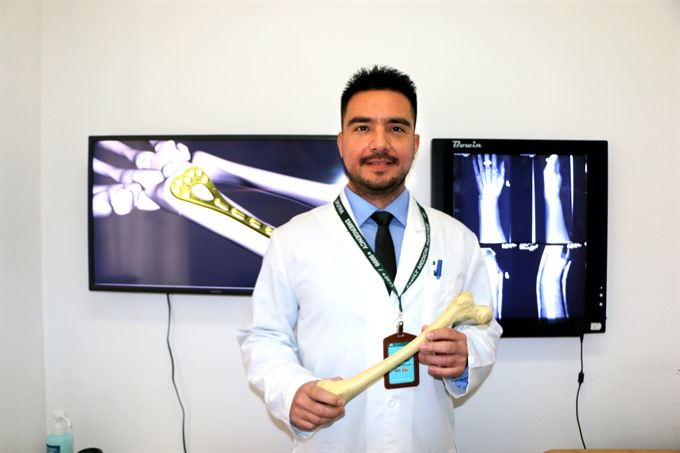Flat feet: Are they a problem?
Having flat feet means that your feet have low or no arches and press almost completely flat against the ground. The arch, or instep, is the middle part of the foot that’s usually raised off the ground when you stand, while the rest of the foot remains flat.
 |
| Dr. Andres Sosa |
In young children, this arch isn’t always visible because of the soft, fatty tissues in their feet. It develops and appears as they get older and it can be usually seen from the second year. However, some kids never really develop this arch, but it doesn’t necessarily means that they will have any problem in the future.
Are flat feet a real problem?
Flat feet are usually nothing to worry about. Many people with flat feet don’t have any associated problems, so treatment isn’t necessary.
However, flat feet can sometimes be associated with stiffness or pain in the feet, ankles, legs, knees, hips or lower back. The feet rolling inwards too much can cause shoes to wear out quickly and may lead to injuries or underlying problems with the bones, muscles or soft tissues in and around the feet. Treatment may be recommended if your kid has any of these last conditions.
When to seek medical advice?
Consider seeing an orthopedic surgeon if your kid’s feet are painful, shoes wear out very quickly, and their feet appear to be getting flatter and weaker, numb or stiff.
What causes flat feet?
Most people simply inherit flat feet from their parents but occasionally, flat feet can be also the result of:
- Feet bones not forming properly in the womb.
- Loose connective tissue throughout the body.
- Any condition affecting the muscles and nerves.
- The connective tissue in the foot becoming stretched and inflamed.
Treatments for flat feet
Flat feet only needs to be treated if you have an associated problem, such as pain, stiffness, overpronation or any other underlying health conditions. Non-surgical treatments are always recommended first, although surgery may be needed in some cases.
Can I get some basic recommendations?
- Wear supportive shoes that fit well: flexible, light, wide and flat.
- Apply cold-packs and using painkillers if there is any discomfort.
- Lose weight if that is an issue.
- Stretch the muscles, ligaments and joints in the legs.
It is important to understand that these actions won’t change the shape of the feet, but may help relieve some of the symptoms associated with flat feet.
When is surgery necessary?
Surgery is only considered if conservative treatment fails or if there is any underlying condition that can be corrected with an operation.The surgical procedure recommended will depend on the cause of flat feet. Your surgeon will talk to you more about the operation and what this may involve.
(Source: Family Medical Practice)